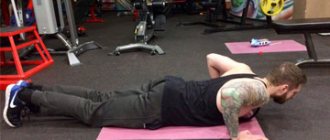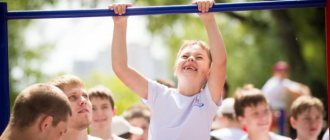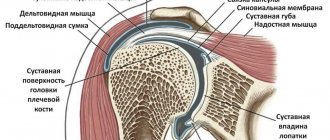Benefits of playing sports
Organized sports will help a child grow in many ways. Various types of sports activities give children the opportunity to:
- learn and master sports skills;
- communicate with the team;
- challenge yourself in a safe environment;
- learn the value of exercise and competition challenges.
And, on top of that, sports provide children with an opportunity for active recreation.
Training will leave less time for the child to watch television. TV and children playing sports don't mix.
But before you enroll your children in a sport, consider each child's age, personality and abilities to ensure that participation in sports is a positive experience for everyone.
To get the most out of any sport, children need certain basic skills. And some of these skills depend on the age of the child. If the readiness to acquire them has not yet matured, children may become upset and further desire to engage in sports will disappear.
Sport as a tool for adolescent personality development
Bibliographic description:
Shchepotyev, A.V. Sport as a tool for the development of a teenager’s personality / A.V. Shchepotyev, E.D. Lukyanova. — Text: direct // School pedagogy. — 2020. — No. 3 (13). — P. 11-15. — URL: https://moluch.ru/th/2/archive/104/3645/ (access date: 10/08/2020).
This article is devoted to the influence of sports on the personal and professional growth of a teenager. Sport is considered by the authors as a “social elevator” for moving up the social ladder. There are many opportunities in society on the path to success, and sports is one of them. The role of sports is highly valued by society, and therefore, support for sports is provided by the state at all levels.
Key words : sports, education, pedagogy, personal growth, “social elevator”, leadership qualities, teamwork, the younger generation, youth policy.
Sport plays a prominent place in the life of modern society. Sport is very multifaceted. Let us turn to the meaning of “sport”.
SPORT is physical exercise, mainly. in the form of various games or competitions aimed at strengthening the body and developing mental vigor. [4].
From the definition it follows that sport not only has a beneficial effect on a person’s physical condition, but also on the emotional one. This fact cannot be ignored, at least due to the fact that a person can be considered happy and healthy only when all the components of his body and soul are in general harmony and well-being.
For the most part, everyone went in for sports. More often this began in childhood, when parents saw in their own children all possible talents, both in swimming and running or, for example, in dancing. Without hesitation, they enrolled even very young children in different sections and clubs, took them there, waited, picked them up, and so on in a circle, until the children grew up and could do all this on their own. So what was the point of playing sports? It's no secret that every parent wants their child to be healthy, and sport is the best way to keep the body in order. Physical exercise fulfills the daily need for movement. At a young age, sport has an extremely beneficial effect on health, but one should not forget the extremely important thing - everything is good in moderation. If physical education does not bring positive emotions and the desire to continue exercising, you should think about changing direction or find another reason that could cause such a reaction. In other cases, training is not only possible, but necessary!
In adolescence, the need for sports is much higher than in any other age, since the human body undergoes functional changes at this time. At this time, the foundation is laid, on which depends how strong and resilient the child will be later. Let's list the positive effects of sports on the body when playing sports as a teenager:
– gets sick less;
– becomes more attentive;
– becomes more stress-resistant;
– understands and controls your body better;
– has better control over one’s own emotions, etc.
Regular physical activity helps improve the circulation of oxygen and blood throughout the body. Even the most ordinary morning exercises will be useful, as they will tone the body. Playing sports allows a teenager to become more resilient, and this is important in the current rhythm of life.
Sport shapes a teenager’s character, changing him for the better. Thanks to training, will develops, the desire to win, endurance, the ability to fight to the last, not to be afraid of defeats (to be able to lose with dignity). Willpower, which is formed in the process of sports activities, contributes to the development of a teenager into a strong personality capable of achieving a lot [3].
Sports activities can be divided into three conditional levels:
– health-improving physical culture (morning exercises, systematic warm-up, health promotion), i.e. classes “for yourself”;
– individual or team training with participation in championships and competitions at the “amateur level” (training with participation in sports competitions);
– sport of high achievements, professional sport (a person makes sport his professional activity, his main job is professional sports).
As a rule, a person gets to the next level after passing the previous one. This does not mean that a professional athlete does not do health-improving gymnastics in the morning, but this path implies development and personal growth gradually from simpler to more complex, from the first sports lessons to competitions of a higher and higher level, and with high sporting achievements a person can become participants in international competitions, Olympic Games, and become a professional athlete.
A teenager’s sports activities can be divided into 2 areas of personal growth and self-determination:
- The first direction of sports activity is mainly aimed at self-realization of teenagers, assertion of their own “I”. Even when speaking for his team, his class, he is directed at himself not as part of the overall system (team), but as an individual striving for his own achievements.
- The second direction of sports activity is characterized by the fact that the personal championship of a teenager still implies the protection of the interests of the team, i.e., here lies the possibility of forming collectivistic qualities of the individual [1].
Difficult situations are created in the relationships of adolescents in connection with various options for sports activities. On the one hand, sports activity is associated with the individual skills of the athlete, on the other hand, many types of sports training are associated with collective forms and goals - the fight for the honor of the team.
Sports activity develops the most important personal qualities, not only such as endurance, strength, dexterity of movement, but also determination, perseverance, responsibility, collectivism, and determination. It is the ability to acquire these qualities that actualizes the importance of sports activity in adolescence.
Let us note that sport can contribute to the development of leadership qualities, perseverance, as well as the ability to work in a team, which will undoubtedly be useful for a teenager, regardless of the chosen field of activity in the future.
For example, the captain of a team in a sports environment will be able to develop leadership skills, learn to distribute labor resources, be able to choose among the worthy ones the most effective for a specific task, etc. The captain of a sports team will lead the team to victory. Likewise, the head of an organization or an independent department will lead the workforce towards a specific goal of production activity.
And a person who has learned to work in a team, who knows how to pass a pass, back up a partner and put the team’s interest above his own, is more likely to work successfully in a work team.
An important role in further work can also be played by a person’s ability to individually win, accumulating his resources, focusing on a specific goal. A person with such qualities will be able to more effectively achieve their goals within limited resources, including temporary ones.
It is no secret that there is a lack of social justice in the modern world. Many people want to be successful, rich people, but not everyone understands how to do it. It’s one thing when you initially “sit quite high” and you just need to take advantage of the moment and rise higher and higher. A completely different situation arises when a person is not initially surrounded by business connections or rich relatives, that is, he is at the lowest level of the social pyramid; here it is much more difficult to rise to the very top, to the elite of society. But there is a way to achieve the desired standard of living solely through your own efforts - this is sports.
For hardworking, prepared, talented and ambitious people, this solution will be the most profitable.
That is why in modern society there are many areas of personality development and personal growth of a person in society, i.e. the presence of so-called “social elevators” that allow a young person to climb higher on the social ladder. Speaking about teenagers, it is worth mentioning the phenomenon of volunteering and volunteerism. In this area, adolescents can develop effectively and successfully and acquire the necessary skills and competencies. Involving young people in volunteering - voluntary, socially useful activities - brings a lot of positive results. Volunteers are needed at various cultural events, sports competitions, environmental work, working with people with disabilities, etc.
Another example of a person’s personal growth in society (for example, in the cultural sphere of activity) is collecting, participation in exhibitions of collection material, scientific work (desk research), etc. [5].
And naturally, one of the opportunities for the development of a teenager’s personality, his rise on the “social elevator” upward, is sports. In sports, everything is very transparent, your success depends only on your efforts and results. Here everything is objectively determined by seconds, points, shots, goals, etc.
Beginning athletes should understand that the matter does not end with a sports career and fees paid for victories. Many famous champions become highly paid coaches, TV presenters, and journalists.
Of course, you need to understand that nothing happens “all at once”; in order to achieve high results, you need to go through the path of minor competitions, defeats, injuries, and yet, with talent, perseverance and willpower, modern sport is one of the best ways into the world elite.
A person's sports activity can allow him to achieve a high status in society.
Having already become a competent and experienced athlete, a person can apply for highly paid contracts. It's no secret that famous football players, hockey players, and basketball players who play for major sports clubs receive large fees. Wrestlers or boxers who compete in fighting competitions can have impressive fees, etc.
Sometimes successful athletes become famous coaches who train younger athletes.
Some athletes subsequently become sports commentators, presenters of sports programs on TV or radio, etc.
Athletes (after completing a sports caper) can realize themselves in government bodies, dealing with issues of sports development, health, working with youth, etc.
Sport provides many avenues for self-realization and success.
But even if, while playing sports, a teenager does not achieve high results, but spends his leisure time on the sports ground, this is also very good. Sports can be considered a “healthy” hobby. Yes, there are risks of injury in sports. But by playing sports, a teenager is less likely to get into a criminal situation and will not follow the path of violating the law. In modern society, it is very important to carry out targeted actions aimed at reducing juvenile crime. [2]. And involving a teenager in sports may well contribute to this.
To summarize, I would like to draw your attention to the fact that playing sports not only contributes to improving the health of a young person, but also influences the development of his personality. Sports can also serve as a powerful “social elevator” for a teenager who is not yet experienced enough. The role of sport is very great in modern society, which is why sport is supported at all levels of government, as well as by public and other organizations.
Literature:
- B. I. Sarsenbaeva. “Psychological features of the attitude of adolescents to sports activities”//Journal “Questions of Psychology”, 1980–1998, pp. 124–126, https://voppy.ru/issues/1981/814/814124.htm
- Vorontsova N.V., Minenko K.S., Shchepotyev A.V. Determinants of criminal behavior of minors // Higher school pedagogy. - 2020. - No. 1., p. 7–9.
- Pedagogy (sport in the life of a teenager). December 31, 2014, (address https://paidagogos.com/?p=7780)
- Ushakov.D. N. Dictionary//1935–1940
- Shchepotyev A.V., Nadein V.V. Development and promotion of collecting as a tool for raising the cultural and moral level of youth. // Electronic scientific and educational journal “Bulletin of TIEI”, No. 5–2014, pp. 98–102.
- Shchepotyev V.I., Shchepotyev A.V., Shchepotyev A.I. Development of volunteerism and volunteer activity as a tool for cultivating patriotism [Text] // Current issues of modern pedagogy: materials of the X International. scientific conf. (Samara, March 2017). - Samara: ASGARD Publishing House LLC, 2020, pp. 77–81.
Key terms
(automatically generated)
: sport, sports activity, playing sports, personal growth, teenager, modern society, young man, adolescence, social ladder, work collective.
Basic skills that will allow a child to engage in a particular sport
Learning skills such as throwing, running and jumping is a normal process. Children master each skill little by little, some learn faster than others. By the time your child is between 3 and 5 years old, he will have mastered some of these basic skills.
To play a particular sport, children must learn to combine these skills (for example, running and throwing at the same time). This will not happen until the child is 6 years old.
When a child is young, sports can be adapted to make it easier to play.
For example, you can:
- use adapted equipment;
- change roles or positions frequently;
- make games and exercises shorter;
- make the game fun to keep your child engaged.
Tennis
Tennis, for all its complexity, is one of the most interesting, dynamic and even intellectual sports. You can take your child to the section as early as 5 years old.
Pros of tennis:
- training of the muscular and cardiovascular systems;
- improved blood circulation;
- increased reaction speed;
- development of mobility and endurance;
- acceleration of metabolism and improvement of metabolism;
- improved vision;
- development of analytical thinking, formation of skills in calculating tactics and game strategy;
- instilling discipline and responsibility;
- increasing self-esteem.
Experts differ on the question of what harm playing tennis can cause. Some argue that there are practically no downsides. Others are sure that the main one is the enormous overload, both physical and psychological, that the body experiences during training and competitions.
In addition, many athletes are susceptible to an occupational injury called tennis elbow. The working hand suffers due to constant monotonous movements, when the load falls on the joints and muscles of the forearm and wrist. However, you can partially protect your child from this by choosing the right racket. But the high cost of equipment is also a significant drawback. Tennis is a very expensive sport.
When should children start playing sports?
If you intend to send your child to one or another sports section, think about how emotionally and physically ready he is for classes.
If the baby is too young or not ready, it will be unpleasant for everyone, which can turn the child away from sports forever.
Although there are sports programs designed for preschoolers, it is not until the ages of 6 or 7 that most children develop the physical skills and attention needed to play many sports.
Preschoolers can throw and run, but it usually takes some time before they can connect these skills and understand the rules of the game being offered.
This does not mean that children should not play sports when they are very young. Sports can be fun for toddlers and preschoolers, but the game should be less competitive and more educational so that a young child can have fun while being active.
So even if little kids accidentally score an own goal or spend the entire game chasing butterflies, as long as they enjoy it, it's okay.
If you decide to enroll your 5-year-old child in a section, be sure to choose one that will bring pleasure to the child and develop his basic skills.
Encourage your child to play sports that he enjoys, but also encourage him to try different sports when necessary. This will help him acquire various skills.
Swimming
Swimming is one of the few sports that you can practice throughout your life: from birth to old age. It is worth teaching a child to swim from the first months of life. In the “mother + baby” sections operating in swimming pools, babies are taught to float on the water. It is better to start more serious and targeted training at the age of 3-4 years.
Classes contribute to:
- strengthening the musculoskeletal system, respiratory and cardiovascular systems;
- improving blood circulation;
- reducing stress levels and improving mood;
- hardening the body and training the immune system;
- also have a therapeutic effect on diabetes, scoliosis, joint diseases, bronchial asthma, myopia, and obesity.
There are simply no downsides to swimming for boys - this is exactly the case when disadvantages turn into advantages. During professional training, the muscles of the torso and shoulder girdle develop especially strongly, which is not very good only for girls. Boys and young men, on the contrary, develop an ideal figure.
How do I know if my child is ready to play a certain sport?
Below are the skills that children typically already have at an early age and the types of physical activities they can engage in.
At the age of 3 to 6 years, a child can run, jump, throw, and maintain balance. He has difficulty tracking the direction and speed of moving objects. Concentrating for a very short time. Learns better by copying others.
Skills to focus on during this age period: teaching basic skills, fun play. Learning new exercises is more important than competition.
Suggested activities: running, tumbling, throwing, catching, riding a tricycle.
Read this helpful article from a tech expert on how to choose the right kids tricycle.
When choosing sports for children, consider the unique character of your child. Some children enjoy team sports more, while others are drawn to activities that emphasize individual effort.
There are sports for everyone - from basketball and soccer for team-oriented kids, to karate, fencing, tennis, swimming and dance for kids who prefer to practice individually.
Don't be surprised if it takes you more than one try or several seasons to find a sport suitable for your child. It often takes time for children to figure out what activities they like.
The perfect workout
- It's better to study at the same time. If a person is a morning person, then the first half of the day is suitable, if a person is an owl, then the evening.
- The optimal training duration is 40–60 minutes. If you exercise more, the effect will be the opposite - the muscles will only become exhausted.
- The workout should be thoughtful, intense, with an equal amount of rest between approaches, without distractions by talking.
- It’s good to practice with a partner - firstly, a partner can always provide backup, and secondly, look from the outside at the technical correctness of performing this or that exercise.
- A person involved in sports should have good rest: 8–9 hours of sleep is a must.
- The optimal frequency of training is 3 times a week. When a person starts exercising, for the first 3 months the body just adapts to the new regime, so don’t let your little one go to the “rocking chair” 7 times a week.
- When purposefully gaining muscle mass, it is worth keeping a diary in which you need to describe what exercises you did, what weights you started with, and what your progress is. You can also make notes about how you feel and regularly show your diary to your trainer. Then later it will be possible to understand whether the training is structured correctly.
Sports for boys and girls
In preschool, most sports are suitable for both girls and boys. At older ages, sports for boys and girls may differ due to anatomical and physiological characteristics.
What sport should I send my girl to? More suitable for girls:
- gymnastics;
- swimming;
- figure skating;
- Horseback Riding.
What sport should I choose for a boy? More suitable for boys:
- gymnastics;
- football;
- skating;
- oriental martial arts.
Some children simply aren't interested in team sports, but they can stay fit by participating in other physical activities that don't emphasize competition. Regardless of what they choose, children should be physically active for at least one hour a day.
New lifestyle
The results of training are influenced not only by hardware and technique, but also by your entire lifestyle. A young man eager to find a new body needs to sleep at least 8 hours a day, it is vital to give up bad habits (no smoking, no libations), and start eating right. The best eating style is fractional, 5 times a day at intervals of three hours. You can’t “sandwich” 5 times a day either - you have to maintain a balance of proteins, fats and carbohydrates. You shouldn’t expect results from nutrition while running, because 70–80% of success depends on what a bodybuilder eats.
The principle of nutrition is simple: in the morning we load up on slow carbohydrates - these are all kinds of cereals and pasta. Proteins should enter the body in the afternoon, and proteins of animal origin (milk, meat, fish, cottage cheese), as they contain essential amino acids.
And you don’t have to strive to “melt all the fat” - lose weight so that the “pack” on your abs becomes noticeable. Lack of food and excessive exercise can only lead to the body becoming exhausted and exhausted. If you don’t eat, you won’t have muscles - this is a proven fact!
Important conditions for sports activities
Before starting classes, children must undergo a medical examination.
Those with certain medical conditions, visual impairments, hearing impairments, or other disabilities may have difficulty participating in sports. In rare cases, a doctor may discover an undiagnosed condition that will affect athletic performance. While you should share your preferences with your children, forcing them to play the same sport that their parents once enjoyed is not a good idea.
As your child tries different sports, stay involved.
Please note the following factors.
- Safety. Does the coach require players to follow the rules and use proper safety equipment? Do players have time to warm up and cool down before and after each practice or competition? In hot weather, does the trainer pay attention to hydration, humidity and temperature? Are children taught proper movement and body position? Is the coach sensitive to concussion prevention? Monitor these aspects.
- Training style. Attend training or communicate with the coach to determine your child’s attitude towards the classes. How much does each child play and how is play time determined? If the coach constantly yells at the kids or only allows the most experienced players into the game, your child may not like it.
Overall, be positive. Emphasize your child's efforts, improvement, and enjoyment of victory or personal accomplishment. If your schedule allows, be sure to attend events and training sessions.
When kids are interested in sports, it's important to think about how exercise and play can impact their and your daily lives.
- How will this affect the amount of time the child has for things like homework, hanging out with friends, and other activities? You can get a schedule of activities and games and plot out a typical week on the calendar with your child.
- It is important for children to have rest time, the opportunity to think creatively and play freely when they are not busy with something else. This will give them the energy they need for any activity.
- How will this sport affect the rest of the family's plans? Many groups only practice and play games on the weekends, which can be a problem if your family likes to spend the weekend together.
- If you have more than one child involved in sports, how will you transport them to the training site?
Which section should I send the boy to?
When deciding which section to send a child to, you need to take into account his age and physiology. For example, heavy loads on the musculoskeletal system are unacceptable for children under 5 years of age. During the first five years of a child’s life, a child’s bones are actively developing, and intense training will only harm them. But flexibility can be developed from an early age.
Which sports are preferable at what age:
Let's look at the advantages and disadvantages of different sports. This information is necessary to make an informed decision.
Figure skating
This is a speed skating sport that belongs to complex coordination sports.
Advantages:
- Coordination of movements improves, the eye develops, and flexibility appears.
- The load is distributed across all muscle groups.
- The immune system is strengthened, the child becomes more resilient and efficient.
- Beneficial for the cardiovascular and respiratory systems.
Flaws:
- There is a possibility of injury.
- It is difficult to get classes with a good trainer.
- Considerable financial costs are required.
Contraindications:
- Flat feet.
- Neurological problems.
- Poor eyesight.
- Lung diseases.
- Problems with the vestibular system.
Tennis
This is a sport in which the opponents are two players or two teams, each consisting of two participants. A tennis player uses rackets to send the ball to the opponent's side; his goal is to prevent the opponent from reflecting the ball onto his playing field.
Advantages:
- Positively affects the cardiovascular system.
- Coordination develops, reaction and endurance improve.
- Low risk of injury.
- The child learns to choose tactics and strategy.
Flaws:
- Classes can be quite expensive.
- If the load is distributed incorrectly, there is a risk of developing scoliosis.
Contraindications:
- Peptic ulcer disease.
- Vision problems.
- Disorders of the musculoskeletal system.
Swimming
A sport whose essence is to overcome various distances by swimming in the shortest time.
Advantages:
- Immunity is strengthened.
- Good rehabilitation for children who have undergone surgery or injury.
- Exercise prevents spinal diseases and colds.
- Swimming is good for blood circulation.
Flaws:
- Chlorinated water can cause allergic reactions and chronic rhinitis.
- After starting systematic exercise, colds are likely.
Contraindications:
- Exacerbation of any chronic diseases.
- Heart disease.
- Viral diseases.
- Skin diseases.
- Kidney problems.
- Cramps.
Hockey
A sports team game with sticks and a ball (or puck) on ice or grass.
Advantages:
- A sense of balance appears, endurance and coordination actively develop.
- The immune system and musculoskeletal system are noticeably strengthened.
- Positive effect on the nervous system.
- Developing responsibility, the ability to organize oneself, and discipline.
Flaws:
- There is a high risk of injury.
- Good equipment costs a lot of money.
Contraindications:
- Vision problems.
- Flat feet.
- Asthma.
- Various diseases of the gastrointestinal tract.
- Heart disease.
Martial arts
They are conventionally divided into three groups: Chinese, Japanese and Thai types of martial arts. Chinese martial arts involve mostly self-defense, and the main strategy is to use the opponent's strength against him. The most famous: wushu (kung fu), tui shou, sanda.
Japanese martial arts are characterized by the use of throwing techniques and force on the joints. The most famous: jiu-jitsu, judo, karate, aikido.
Thai boxing involves the use of powerful combat strikes, so it is recommended to start practicing this sport no earlier than 12 years of age.
Advantages:
- Ability to protect yourself.
- Active work on yourself, the opportunity to cope with fears and complexes.
- Cultivating courage.
- Harmonious physical development.
Flaws:
- Success in mastering martial arts depends entirely on the coach, so it is very important and difficult to find a good mentor. It is necessary that the child does not become pugnacious, but learns the basics of Eastern philosophy on which martial arts are based.
- There is a small risk of injury.
Contraindications:
- Disorders of the musculoskeletal system.
- Vision problems.
- Kidney diseases.
- Diseases of the cardiovascular system.
Dancing
There are several types of dances: Latin American (rumba, samba, cha-cha-cha), European - classical dances (tango, waltzes and others), modern (RnB, Hip-Hop, Jazz).
Advantages:
- Developing flexibility and dexterity, the body becomes more flexible.
- Useful for coordination of movements.
- Good taste is formed.
- Excellent prevention of colds.
- Development of the respiratory system.
Flaws:
- Large financial investments are required.
- There is a risk of injury.
- There is a lot of competition in this sport, and negative experiences are possible.
- Dancing puts a lot of stress on the heart.
Contraindications:
- Flat feet.
- Problems of the cardiovascular system.
- Vertebral hernias.
Kickboxing
This is a contact type of martial arts in which both punches and kicks are acceptable.
Advantages:
- Muscles are actively developing.
- The child gets rid of fears, complexes, stress and various negative emotions.
- Positive effect on the development of coordination, reaction and posture.
- Excellent strength load.
Flaws:
- Highly traumatic competitions, especially in the directions.
- Undeveloped organizational aspects (training programs are not well thought out and there are no clear rules for conducting fights).
Contraindications:
- Any chronic disease in the acute stage.
- Problems with joints or spine.
Capoeira
Photo source: commons.wikimedia.org. Author: bongo vongo
Brazilian national martial art, in which elements of dance, acrobatics, and games found their place.
Advantages:
- Muscles are actively developing.
- The child gets rid of fears, complexes, stress and various negative emotions.
- Positive effect on the development of coordination, reaction and posture.
- Excellent strength load.
Flaws:
There is only one main drawback - it is not easy to find a good professional trainer. This sport is not very popular yet, so there are few good mentors.
Contraindications:
- Injuries.
- Problems of the cardiovascular system.
Acrobatics
One of the types of gymnastics, which includes exercises for agility, flexibility, jumping ability, strength, and balancing.
Advantages:
- Acrobatics is a good way to use up excess energy.
- Metabolism improves.
- Positive effect on the child’s psyche and mental activity.
- Uniform load on all muscle groups.
Flaws:
The main disadvantage is that it is easy to get injured. Most often these are sprains and various bruises.
Contraindications:
- Epilepsy.
- Problems with the heart and blood vessels.
- Diseases of the musculoskeletal system.
- Myopia.
- Rachiocampsis.
Horseback Riding
Involves types of competitions, sports games and exercises using riding and the participation of horses.
Advantages:
- Regular communication with an animal has a positive effect on your mental state.
- Good relaxation.
- Development of a sense of balance, muscles, coordination.
Flaws:
The only drawback is that such a sport is not always available. There may not be a stable nearby, and the training itself will require significant financial costs.
Contraindications:
- Heart problems.
- Risk of thrombosis.
Should children be allowed to quit playing sports?
If your child is part of a team that depends on their participation, you can explain the importance of getting through the season. If this is not the case, ask yourself if you would like your child to quit training. Think about what the consequences will be.
If a child is overwhelmed or unhappy, leaving may be the right decision. But it's still important for kids to be physically active every day, even if they stop playing sports.
If your child is not interested in sports, find other physical activities. The best ones are those that you can do throughout your life.
You can ride bicycles and play on the playground. Encourage active time with friends and their outdoor games.
These are general guidelines to consider. Children mature at their own pace and develop their unique skills at different times, so it is important to consider your child's emotional and physical maturity before starting the sports season. There is no point in forcing children to play sports if they do not enjoy it.









